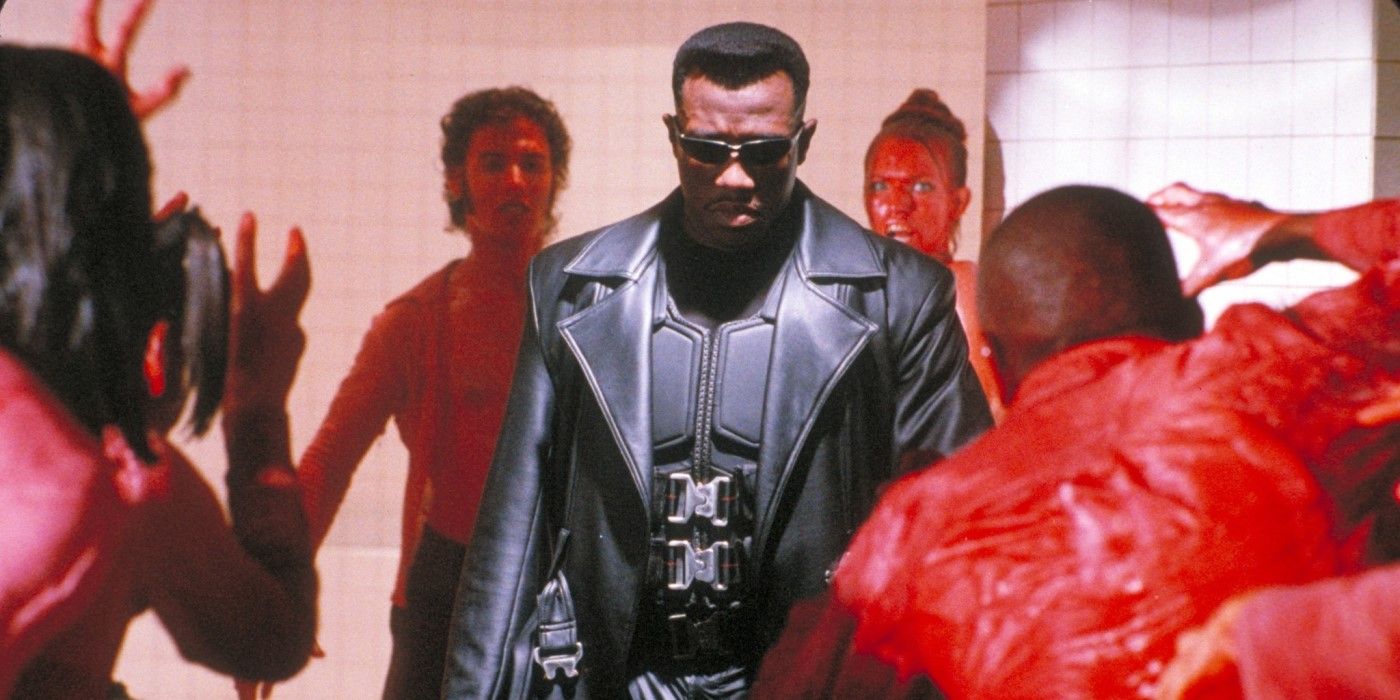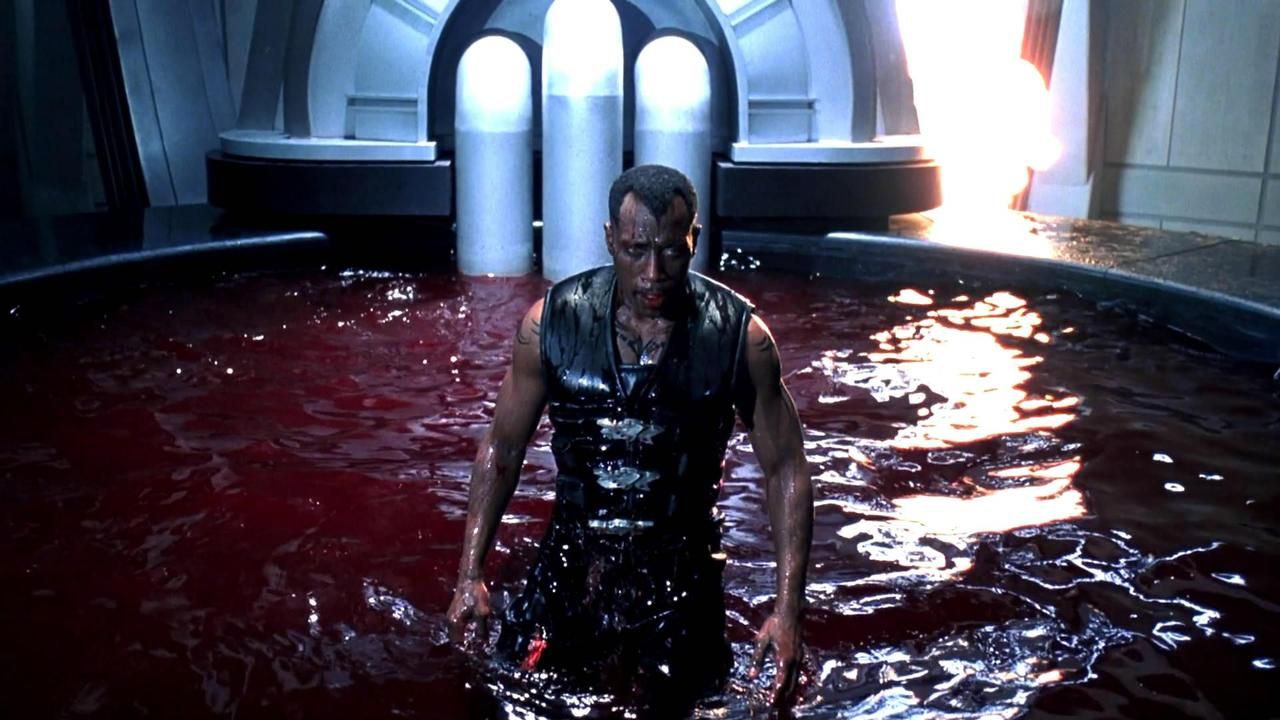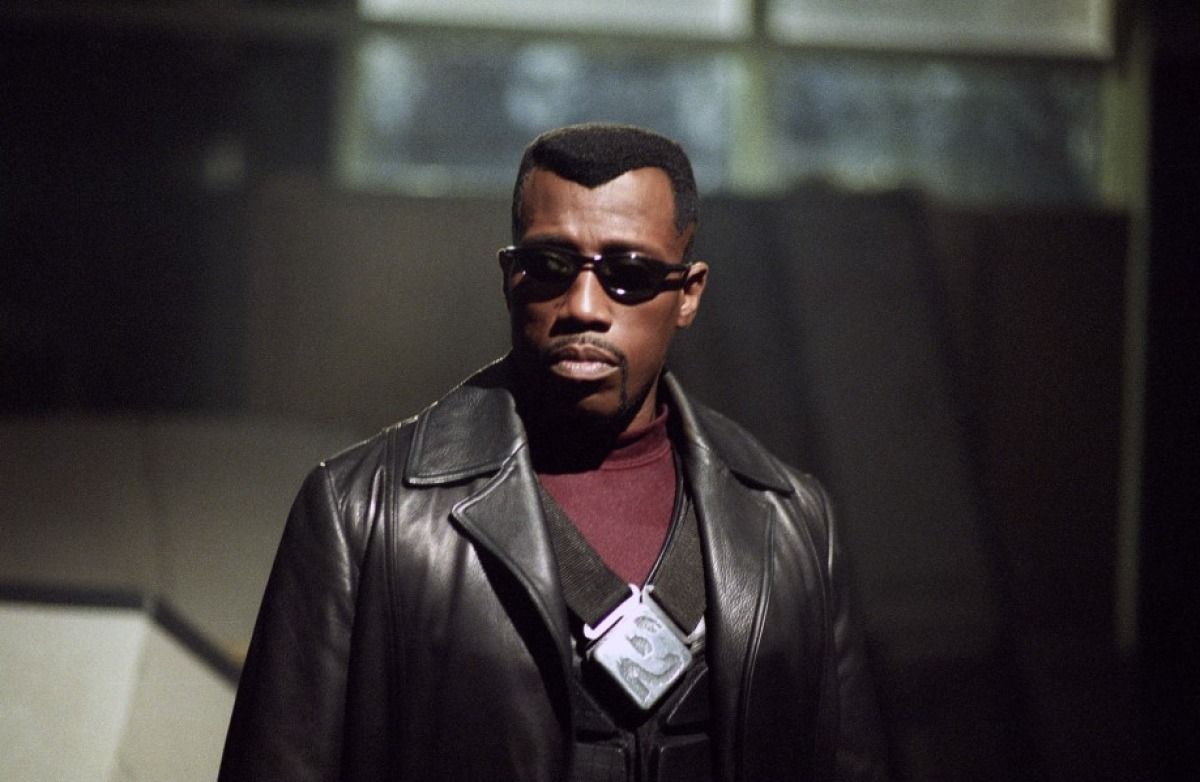When pinpointing the most pivotal film in the Marvel Cinematic Universe, many critics will often point towards Jon Favreau’s Iron Man in 2008 as the pioneering film in the Marvel Cinematic Universe. In some ways this is true: Favreau’s film would set up a series of interconnected stories told through movies and television that would span decades and cement Marvel as the premiere teller of superhero stories on the silver screen and eventually on television screens. What many don’t realize is that Iron Man was not Marvel’s first movie, and is not Marvel’s first cinematic blockbuster. Nor were Spider-Man or X-Men. In fact many seemed to have forgotten about another Marvel blockbuster that hit theaters way back in 1998: Stephen Norrington’s Blade. Blade and its subsequent trilogy set a precedent within Marvel movies as the first commercially and critically successful theatrical release of a movie based on a Marvel comic book franchise (Nobody actually counts Willard Hoyck’s 1986 film Howard the Duck).
It was precedent-setting in a number of ways. It blended genres between superhero and horror, something that at the time infused a fresh take on the comic superhero film. In contrast to films like Batman and Robin and Steel, which both eschewed the darker more serious tones for colorful, campy, more comic-bound portrayals of their characters, Blade was dark, bold, and serious. It held a rare R-rating, something that went on to become a novelty until recently when it’s become more common with commercially and critically successful films like Deadpool and Logan, which in a way owe their success to Blade. In line with this, the film took itself seriously, and so did the actors. While filming, Wesley Snipes employed a method acting strategy for all three films in the series. He refused to break character during production, even going so far as to give an iconic interview while in character as the titular vampire hunter. This was something special because it showed that Snipes was taking the character seriously. This was not common practice at the time for superhero or comic book movies and is still a rare occurrence (unless it’s Jared Leto). What it signified to audiences was that these characters and films can and should be taken seriously as stylized pieces of art and not just replications of their favorite comic book issues.
Blade also set the blueprint for Marvel in other ways. Blade brought to the forefront the idea of an unmasked superhero: whereas movie franchises like Superman, Batman, and later Sam Raimi’s Spider-Man trilogy focused on the concealing of the identity of its titular characters, Blade was a Black man, with no mask, barging in and taking heads. We would later see this in on-screen iterations of characters like Tony Stark’s Iron Man, Steve Rogers’ Captain America, and many of the other members of the Marvel Cinematic Universe. Although they would don costumes, their identities were known broadly to the public. It was also one of the first successful comic book movies to feature a person of color in the lead. This would open the door for actors like the late Chadwick Boseman, whose universally-lauded lead role in the film Black Panther has been one of the most visible in a turn to more diverse representation on screen and in comic books for entities like Marvel and others.
Although the critical consensus is that the subsequent films in the Blade series were lacking in a number of areas, the Blade series was in many ways iconic. Movies like The Matrix, which debuted 6 months after the original Blade, and the Underworld series, stylistically were very similar to Blade. What once had been a pioneering take on the genre had become one of many in an oversaturated market of moody people in leather doing cool action and fighting otherworldly beings. It was Sam Raimi’s Spider-Man released in 2002 that broke what had become partially a genre convention. Still, the elements of the Blade series remained. It was a brooding, darker story than its comic book and television counterparts, which grounded itself in the real world. The influence of the Blade franchise is undeniable, as it stands as the progenitor to Marvel on the big-screen and as a stylistic influence to many of today’s most recognizable comic book movie franchises.
With Marvel officially announcing a remake of the Blade series at San Diego’s Comic-Con back in 2019, and two time Academy Award winner Mahershala Ali set to take on the lead role, Marvel fans unfamiliar with the franchise will soon be getting a taste. Coincidentally, Netflix has recently added the Blade Trilogy to its catalog and no w seems like the perfect time to revisit the series for longtime fans, or for newcomers to see what the hype is all about.
-3.jpg)
Blade (1998)

The movie that sparked it all. The original Blade is what many consider a seminal film not only in the Blade series but for the comic book movie genre. Based on the than lesser-known Marvel Comics superhero, Blade was the film to kick off the superhero-horror franchise. Released on August 21, 1998, the film was a commercial success, grossing $70 million at the U.S. box office, and $131.2 million worldwide off of a $45 Million budget. It was directed by Stephen Norrington and written by David S. Goyer. At the time, Norrington was a young, unproven director known more for his special effects work than his directing, with credits on movies such as Aliens and Split Second. Goyer, a self-professed comic book nerd, would go on to co-write the critically acclaimed Batman Begins. The film stars Wesley Snipes in the title role, with Stephen Dorff, Kris Kristofferson, and N’Bushe Wright in supporting roles.
In this first installment of the Blade series, Blade is a vampire hunter working with mentor Abraham Whistler and scientist Karen Jenson. He’s a human-vampire hybrid after the vampire Deacon Frost infected his mother prior to childbirth. Blade now has the powers of a vampire without their weaknesses, save for the need to satiate his own thirst for blood. As he hunts down Deacon Frost, he also searches for a cure for his own bloodlust. The movie has an overtly dark tone which garnered an R-rating. Its fast-paced action sequences showcased Snipes’s action-hero chops, which stood in direct contrast to some of its clunkier contemporaries like Batman & Robin. The blending of the superhero and horror genres would become a staple of the franchise and would inspire other movies in the genre. You can find Blade streaming on Netflix now.
Blade II (2002)

The second installment in the franchise, Blade II was released on March 22, 2002. Like its predecessor, it was a success at the box office, grossing over $155 million worldwide in sales making it the most commercially successful film installment. Although it received mixed reviews from critics, it did earn praise for its direction and action sequences. Critics felt that the script lacked character development and relied too heavily on what were quick-becoming well-trodden tropes within the superhero horror genre. David S. Goyer returned to write the sequel, alongside Guillermo del Toro in the director’s chair. Del Toro at the time had just finished working on the gothic horror film The Devil’s Backbone, and would go on to direct Hellboy in 2004 and Pan’s Labyrinth in 2006. Snipes and Kristofferson returned, alongside Thomas Kretschmann, Luke Goss, and Leonor Varela.
In this sequel, Blade returns in his quest to save humans from vampires. This time, he finds himself battling a spreading pandemic. The virus turns vampires into “Reapers”, whose bite can turn both humans and vampires into primal, zombie-like mutant creatures with a ravenous thirst for blood. After making a deal with ancient vampire overlord Eli Damaskinos (Kretschmann), Blade teams up with Damaskinos’ daughter Nyssa (Leonor Varela) and an elite team of vampires under the employ of Damaskinos initially trained to kill him. The group set out to stop Nomak (Goss), the carrier of the Reaper virus, in order to save both vampires and humanity. Although not as iconic as the first film, the idea of a transmittable and infectious virus as a central plot device may strike different chords amidst the ongoing global pandemic. At this point, Snipes has found his character and stuck with it, with little in the name of character development. The plot does not help, with more attention going towards action sequences and overall tone than multidimensional characters and relationships. Still, it is a great watch for fans of the genre, and the action sequences still hold up extremely well. You can find Blade II streaming on Netflix now.
Blade: Trinity (2004)

Blade: Trinity is the third and final installment in the original trilogy. The film debuted in theaters on December 8, 2004, and grossed $132 million at the worldwide box office on a budget of $65 million. Directed and written by David S. Goyer, the film revisits the titular character. Unlike its predecessors, the film received mostly unflattering reviews. Critics cited what had now become well-trodden, stereotypical themes within the genre without much true innovation or change. Newcomers to the franchise included Ryan Reynolds, Jessica Biel, Dominic Purcell, Parker Posey, and Triple H.
Blade is back. This time, the human-vampire hybrid is on the run from the FBI while fighting vampire leader Danica Talos. Talos has framed Blade and is determined to resurrect the one who started it all: Dracula. After being resurrected the legendary and Talos, embark on a plan to wipe all humans from the face of the Earth. It is up to Blade and a crew of vampire hunters to prevent the end of humankind by using the new “Daystar” weaponry. In a market becoming more saturated and familiar with these kinds of franchises, the film did little to stand out in an increasingly competitive field. Still, the film is worth a watch for a number of reasons. Firstly, the themes of racial subjugation and racial inferiority/superiority can be seen as allegories for historical racism and eugenics. Secondly, it introduces us to an iteration of Dracula, who is canonically Blade’s ultimate foe. It will be interesting to see how the reboot revisits both these themes and this character, and whether they can take a more meaningful and thought-provoking approach. Lastly, the supporting cast is great, albeit underutilized. Although these are by no means their best performances, we get to see a pre-Deadpool, pre-Green Lantern Ryan Reynolds, an early 2000s Jessica Biel, and WWE superstar Triple H all sharing the screen with Wesley Snipes in a vampire-battling slugfest. You can find Blade: Trinity streaming on Netflix now.
Read Next
About The Author
Stay connected with us on social media platform for instant update click here to join our Twitter, & Facebook
We are now on Telegram. Click here to join our channel (@TechiUpdate) and stay updated with the latest Technology headlines.
For all the latest Web-Series News Click Here

